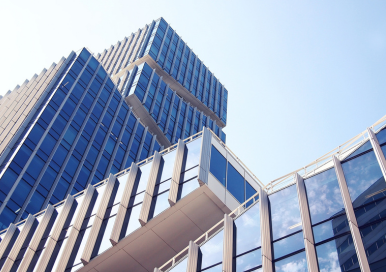Office Space Utilization Trends

Optimizing office space utilization is a crucial aspect of commercial real estate and facilities management for any organization. Efficient use of office space can significantly enhance productivity and improve the overall employee experience. By setting and achieving space utilization goals, companies can ensure their work environments are both functional and adaptable to future needs.
In this blog, we’ll explain the essentials of office space utilization, exploring how businesses can make the most of their work environments to drive success.
Understanding Office Space Utilization
Office space utilization refers to how effectively a company uses its available office space. It involves measuring and analyzing the occupancy and usage of different areas within the workplace. Understanding space utilization is crucial for optimizing the work environment, reducing overhead costs, and enhancing employee productivity.
Key Office Space Utilization Metrics
Occupancy Rate
Occupancy rate measures the percentage of space currently occupied versus the total available space. A high occupancy rate indicates efficient use of space, while a low rate may signal underutilization and potential for cost-saving adjustments.
Density Metrics
Density metrics assess the number of employees per square foot. These metrics help determine if the space is overcrowded or if there’s room to accommodate more employees comfortably.
Utilization Rate
Utilization rate looks at the actual use of workspaces throughout the day. It helps identify peak usage times and underutilized areas, guiding decisions for space reallocation and improving overall efficiency.
Trends in Office Space Utilization for 2024
Hybrid Work Models
The rise of hybrid work environments, where employees split their time between home and the office, significantly impacts space utilization. Businesses are redesigning offices to accommodate flexible work schedules, creating versatile spaces that support both in-person and remote work. This shift reduces the need for permanent desks and encourages the use of shared workspaces, boosting overall efficiency (Source: Hubstar).
Smart Office Technology
Integrating smart technology, such as IoT sensors and advanced data analytics, helps monitor real-time space usage. These technologies provide insights into occupancy patterns, enabling better space management and ensuring that areas are used optimally (Source: Xysense).
Activity-Based Working (ABW)
Activity-Based Working involves creating different zones within the office tailored to various tasks. This approach enhances space utilization by allowing employees to choose environments that best suit their work needs, from quiet areas for focused tasks to collaborative spaces for team projects.
Desk Sharing and Hot Desking
Desk sharing and hot desking eliminate the need for assigned desks, allowing multiple employees to use the same workspace at different times. This model maximizes space utilization and fosters a dynamic, adaptable work environment.
Benefits of Optimized Office Space Utilization
- Cost Savings – Efficient space utilization leads to significant cost savings by reducing the need for additional office space and minimizing unused areas. It allows businesses to allocate resources more effectively and invest in other critical areas.
- Enhanced Productivity – Optimized office layouts that cater to different work styles and activities can significantly boost employee productivity. Employees can choose the most suitable work environment for their tasks, leading to higher efficiency and job satisfaction.
- Improved Employee Experience – A well-utilized office space creates a more pleasant and functional work environment. Employees benefit from having access to various work zones that support their needs, leading to increased morale and retention rates.

Best Practices for Maximizing Office Space Utilization
Conduct Regular Audits
Regular space audits are essential for identifying underutilized areas and opportunities for improvement. These audits help ensure that the office layout aligns with current business needs and employee work patterns.
Involve Employees in Planning
Engaging employees in the planning process ensures that their needs and preferences are considered. Gathering feedback helps create a work environment that supports productivity and satisfaction.
Flexibility and Scalability
Designing flexible office spaces that can adapt to changing business requirements is crucial. Scalable solutions, such as movable walls and modular furniture, allow for easy reconfiguration as needs evolve.
In Conclusion
In today’s evolving work environment, efficient office space utilization is more important than ever. By understanding key metrics, staying updated with the latest trends, and leveraging advanced technologies, businesses can optimize their office spaces to enhance productivity, reduce costs, and improve employee satisfaction. As we move forward, the focus on flexible, adaptable workspaces will continue to shape the future of office space utilization.
Contact IPG for expert advice and solutions tailored to your business needs. Let us help you create a workspace that fosters productivity and growth.




